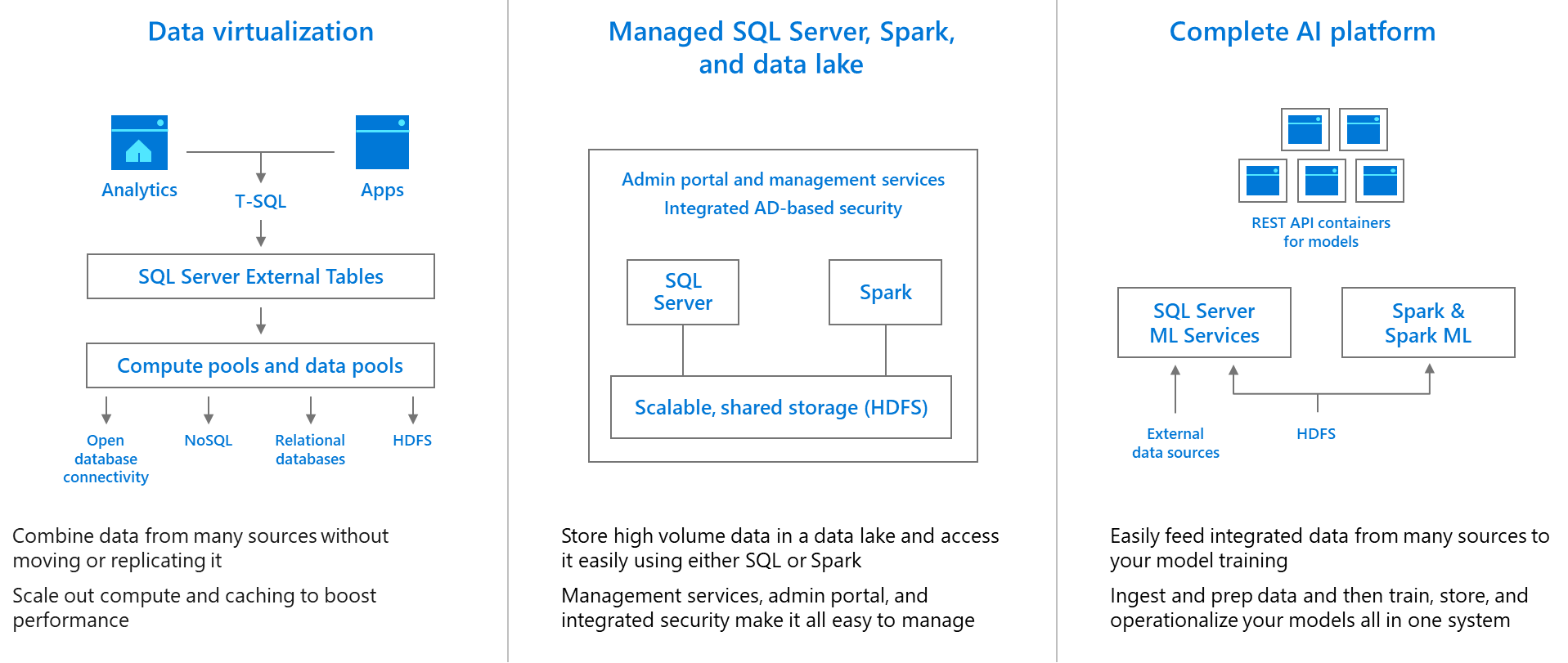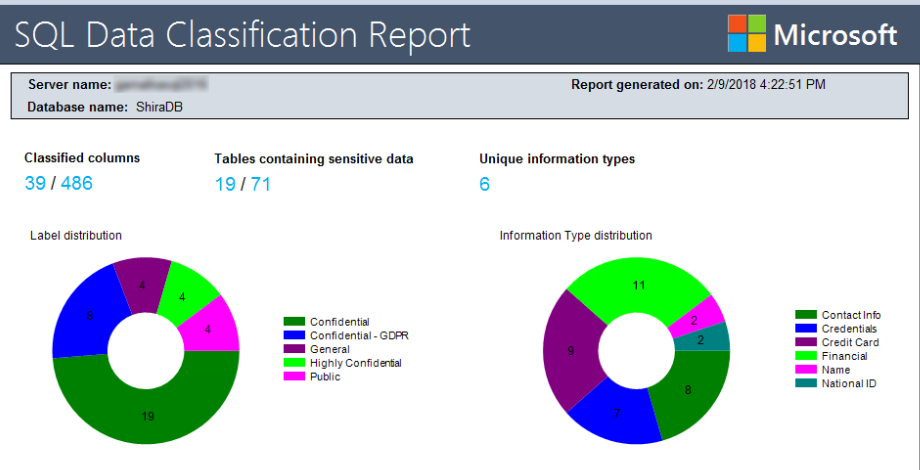Microsoft SQL Server 2019: data platform in a box
Big data clusters
This one is a very interesting development in terms of Microsoft's strategy about SQL Server and big data. SQL will now come bundled with HDFS and Spark all in one integrated package. For people that have been intimidated by the big data stack, this can be an easy way to get up and running, with a product that you know and support you are familiar with. Your people that are familiar with T-SQL can use Polybase and External Tables to query the HDFS data with SQL queries and then your data engineers or data scientists can work with Spark if that is what they prefer. You can also use SQL Server as the "port-of-entry" to your entire data state due to expanded capabilities of Polybase supporting now Oracle, Teradata, MongoDB and more. This is not the same as a linked server; Polybase will allow MPP style parallel reading and processing of data through these SQL Server clusters.
AlwaysEncrypted with Secure Enclaves
Microsoft introduced AlwaysEncrypted in Azure SQL DB and SQL 2016 as a way to keep encrypted data completely at the control of the client, not even possible to be decrypted by a SQL administrator. This approach had a couple of downsides: non-optimal performance as the data had to be encrypted/decrypted on the client side and the lack of rich query computation against the encrypted values. To get around these issues and keep the promise of AlwaysEncrypted, Microsoft is introducing support for secure enclaves. Secure enclaves are protected areas of memory that perform trusted execution and do not allow visibility into their data to any other process, not even to the rest of the SQL Server code. Enclaves are implemented at the hardware level (like Intel SGX) or through virtualization extensions in what is called in Windows as Virtualization-based Security. In the particular case of SQL Server it is currently implemented as the latter. With this in-place, the client is allowed to send their key to the SQL Server process, perform compute operations on the data inside the enclave and get results back, all without exposing this data to any other process running on the server. Cryptographic operations can then take advantage of the beefier server specs as well as rich computations can happen inside the enclave so that encrypted columns don't have to suffer from poor querying capabilities.
Expanded support for persistent memory devices
This is a good one for the performance aficionados that want their database to have the fastest performance possible based on the available hardware in the industry. If you are not familiar with Persistent Memory devices, also called Storage-class memory, they are non-volatile memory devices that provide more density than RAM and faster speeds than SSDs. For more information you can check Intel's video below: With this release, SQL Server will support placing data, log and In-memory checkpoint files on these devices, providing file access at nanosecond latencies. It also includes a new mode of access for the files where it bypasses the OS storage stack and directly addresses the device's storage through memory instructions for even faster results.Intelligent query processing improvements
Microsoft continues to invest on making database tuning an automated process that requires less human intervention. They started this Intelligent Query processing effort targeting mostly batch mode operations and functions but they are really expanding the scope on this release. If you are a fan of database internals and query performance the improvements here will probably make you very excited. Batch mode is enabled now for rowstore tables (no need for dummy columnstore indexes anymore) and memory grant feedback is also enabled for queries that are not running in batch mode. Table variables will now also have deferred compilation so the optimizer will have an accurate cardinality number to use for optimization instead of the hard-coded estimates that have made table-variable plans unstable on previous releases.Data discovery and classification
The regulatory environment for dealing with data is getting tighter and more complicated every day. We just saw the go-live of GDPR and the big impact it is still causing throughout the industry. To help clients assess and keep tabs of all their sensitive data, this new feature will allow for automated discovery of PII in your database as well as tagging and auditing access specific to this data. You can then run canned reports against this information or write your own reports or tools that use the data classification metadata. I can see this capability making auditing and compliance a lot easier and automated.
Final thoughts
As I mentioned before, these are just my picks but the entire list is bigger. Keep in mind this is right now a CTP release so we might see a couple of more things enabled by the time RTM rolls in. Depending on your requirements and your current situation, upgrading to SQL 2019 can be a very compelling scenario. I invite everyone to download the CTP and start playing around with the bits when you have a chance. I will be doing that and blogging in the future about specific features in detail as part of my SQL on the edge series. Cheers!Share this
You May Also Like
These Related Stories
Migrating SQL Server On-Premise to Azure SQL
![]()
Migrating SQL Server On-Premise to Azure SQL
Jul 20, 2020 12:00:00 AM
9
min read
Why Migrate Your PostgreSQL, MySQL or SQL Server to Google Cloud SQL?


Why Migrate Your PostgreSQL, MySQL or SQL Server to Google Cloud SQL?
May 2, 2022 12:00:00 AM
3
min read
Ingest a single table from Microsoft SQL Server Data into Hadoop
![]()
Ingest a single table from Microsoft SQL Server Data into Hadoop
May 13, 2015 12:00:00 AM
4
min read

No Comments Yet
Let us know what you think